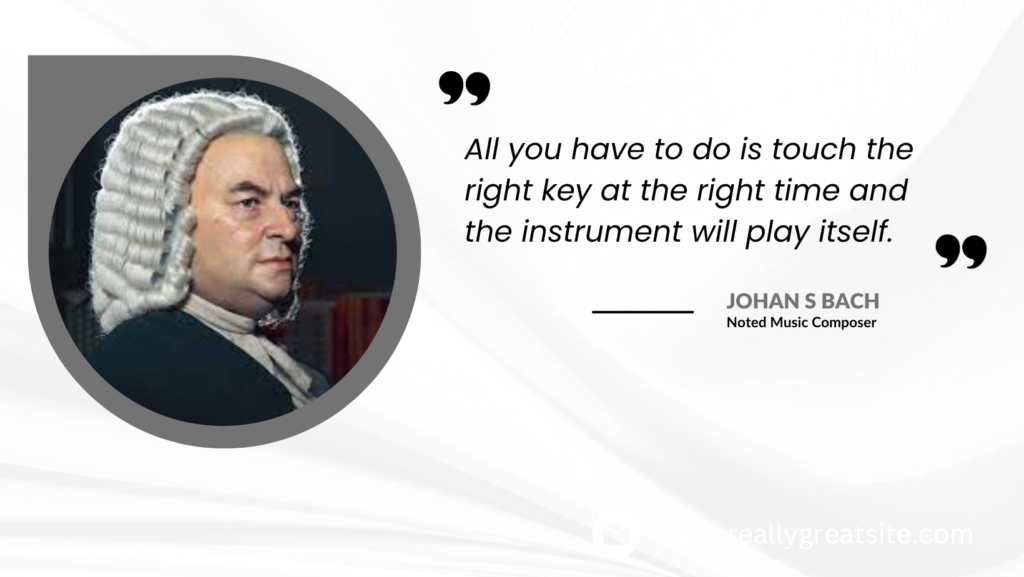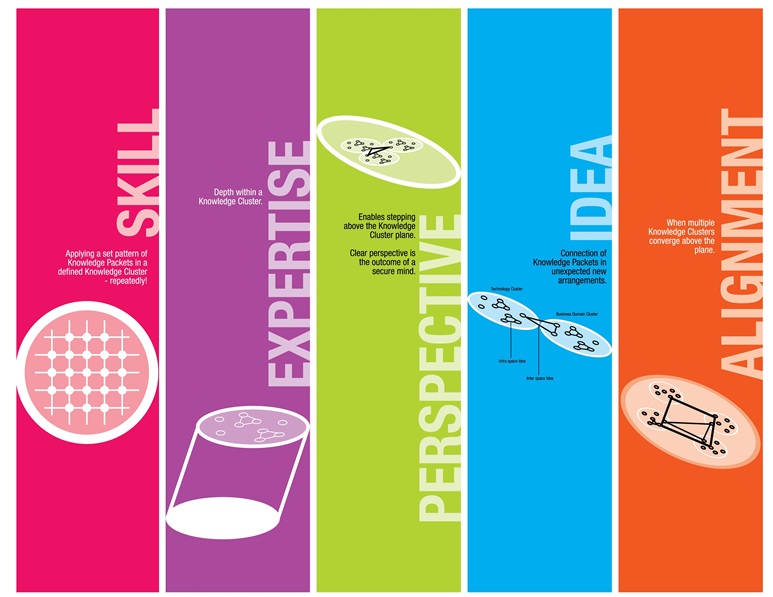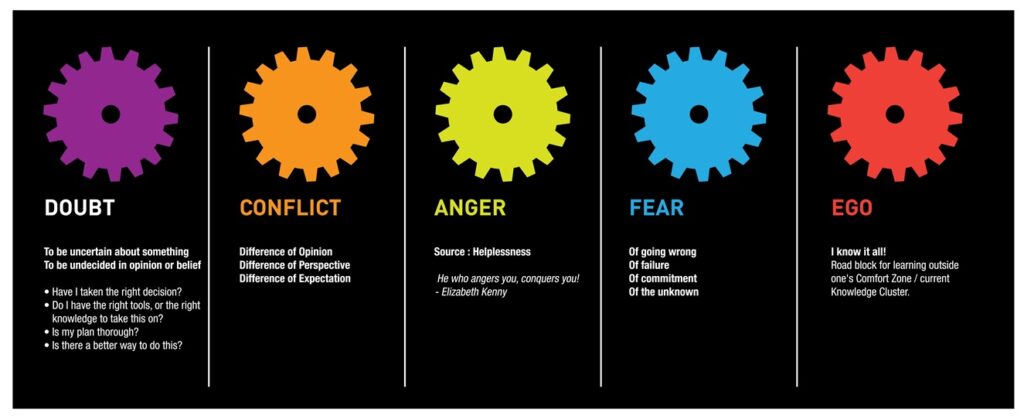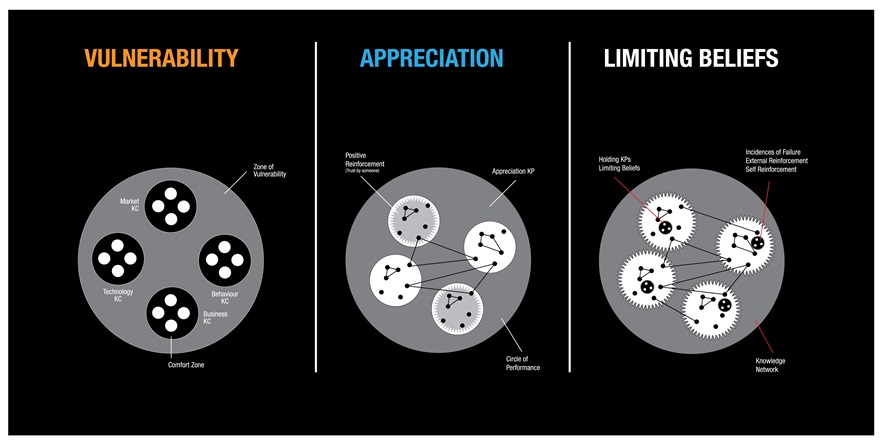Table of Contents

Design Mindset – 13 Musical Notes of Design Thinking
Well! In our philosophy of Design Thinking, great emphasis is placed on the Design Mindset before the practical application of Design Thinking. As a result of experience over the years based on interactions with people from different walks of life, we have designed our proprietary framework ‘Design The Thinking®’ (literally means shaping the thinking) that focuses on some of the crucial elements that catalyze our human mind. We refer to these elements as the notes because just like the notes(keys) in any symphony music, which generates mellifluous music when they are played perfectly in harmony, similarly these notes of ‘Design The Thinking®’ when conditioned together in sync, they have a huge potential to transform someone’s mental model. While our previously drafted blog emphasized on why mindset is the key in any Design Thinking journey, this blog will dive deep into the precise 13 musical notes of our mindset framework.
- SEPIA – 5 Forces of Growth©
- DCAFE – 5 Frictional Forces©
- VAL – 3 Elements to Watch©
SEPIA – 5 Forces of Growth©

These 5 Forces of Growth enable a mindset transformation to envision a holistic perspective while aiming to solve problems. Most of the time, we see ourselves trying to solve problems but in silos or aiming to look at problems from a miniscule perspective. In the journey of Design Thinking, SEPIA enables to bring more collaboration and cross-pollination on the table so that the Design Thinking exercise, becomes more like a team-sport where different experts come together to design holistic solutions. Moreover, we visualize SEPIA as a growth trajectory for any employee who begins his/her career as a fresher but as he/she gains experience, it shows why he/she should focus on the ‘big picture’.
Lets understand each force briefly –
● Skill – Skill is about learning any particular thing. It can be accounting, coding, testing, surgery, teaching or anything. Most of us have multiple skills (skill-set). Mastering any particular skill is understanding the nitty-gritty’s of it. Eg – A developer has coding as a skill.
● Expertise – Working on that skill continuously makes someone an expert. In this journey from skill to expertise, one tends to gain experience on patterns (what is going right consistently) and anti-patterns (what goes wro ng consistently). With this knowledge, one tends to achieveefficiency by saving a lot of time, effort,
etc. Expertise brings efficiency since experts go prepared while working on
that skill. Continuing the example, the developer becomes a senior developer.
● Perspective – But experts don’t remain (and they should not) experts for life-long. A day comes in every expert’s career when they see themselves in mid-management as they get promoted as managers / team-leads / project leads etc. They are accountable and are expected to lead a team of different experts under them. And that’s where they see things from a 10000 ft perspective i.e. big picture. Perspective enables that broader vision. Continuing the example, the senior developer becomes a project manager.
● Idea – Innovation is connecting different dots together. At a perspective level, managers can bring different expertise together to solve a complex wicked problem. Ideation is possible because different heads come together. Continuing the above example, a project manager can bring a developer, tester, UI/UX expert, subject matter expert etc., to solve a problem and thus envision a holistic solution. This phase is making collaboration more joyful.
● Alignment – Collaboration is joyful as long as there is alignment (a common understanding about the problem). There is a risk of confusion and ideation going haywire, if different experts don’t share a common vision. And that’s where leaders have to align every stakeholder in solving problems. As goes the famous adage “It takes a village (to do anything monumental)”, stakeholder management becomes very critical. Lot of complexities can be addressed with proper alignment between stakeholders.
To summarize, SEPIA enables making Design Thinking a collaborative and co-creative exercise.
Design Story:
DCAFE – 5 Frictional Forces©
In any collaborative environment, we see some of the below frictional forces playing their part. But (for a change), can we visualize some elements of friction positively (friction is seen as a negative force typically)? Why & How… Let’s see!

● Doubt – For meaningful collaboration and achieving clarity within a team, we need an environment where doubts are entertained. Timely clarification of doubts helps to avoid assumptions. Creating such a conducive environment is a matter of culture change but it is possible.
● Conflict – Conflicts are bound to happen during ideation. But as long as there is alignment and conflicting stakeholders focus on “What is right and not who is right”, conflicts can result in creativity.
● Anger – Anger is demonstrated when things don’t go as planned. Solving complex problems requires patience and the ability to stay put in testing times. Restraint on anger has to be demonstrated especially by leaders.
● Fear – The consequential step of anger demonstration (from leaders) is the creation of fear. If a team or an individual surrenders to fears (arising out of the factors mentioned above), no innovation is possible. In the journey of Design Thinking, this fear has to be overcome.
● Ego – As someone who grows in any organization/domain, the “I Know it All!” syndrome thwarts any new learning opportunities. Collaboration – Ego = Innovation is the crucial mantra to create any learning organization.
We have been working closely with several organizations to bring a Design Thinking culture change amongst teams/ units focusing and leveraging DCAFE elements to foster innovation.
VAL – 3 Elements to Watch ©

The final 3 elements can’t be overlooked which can add a lot of VALue in any team-
● Vulnerability – The more expert one becomes, the greater risk one carries to go into a comfort zone. Experts might tend to develop their own inertia and failure to try something new (beyond their expertise). Vulnerability is shedding that comfort zone to make their hands-dirty in exploring. A lot of learning happens during vulnerabilities which come with some practice
● Appreciation – As the acclaimed Rhonda Byrne says ,”Appreciation attracts Appreciation! Remember that you are a magnet.” The phase of vulnerability can break anyone since it involves failures. During such instances, it is a simple gesture of appreciation that helps innovators to keep themselves motivated. Team members need to foster appreciation in any form, shape
● Limiting Belief – Many times, we continue to carry the baggage of past experiences (of failures). This is an instance where we need to check if these limiting beliefs are putting any restrictions (factors of fears as mentioned above) in our thought process. As leaders, they need to remove such limiting beliefs within teams and importantly themselves.
To summarize, these 13 musical notes when woven as part of HR processes, seating arrangements, employee engagement mechanisms, etc. have a huge potential to create a fostering environment to generate innovation and help employees think beyond the box. Continual application of these concepts over the years then become the Culture of any organization.

